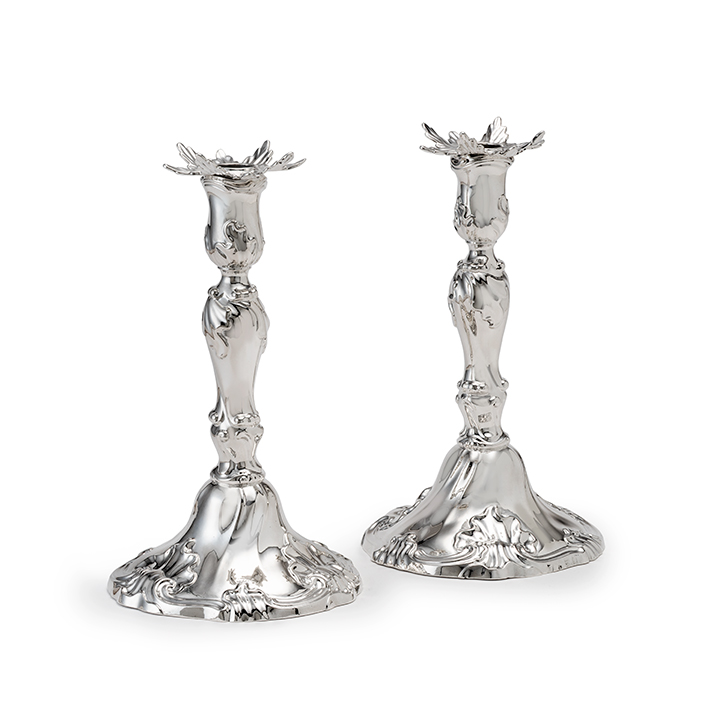
Pair of Dutch silver candlesticks
About This Project
Pair of Dutch silver candlesticks
Pieter Kersbergen
The Hague, 1762
1185 grams; 23 cm high
The cast candlesticks are decorated with swirling flutes and shell and leaf motifs. The detachable sconces are formed by protruding leaves. Fully marked on the foot rim and displaying an assay stripe on the reverse of the foot.
The silversmith
Pieter Kersbergen, a Catholic, married Elisabeth van der Vet on 24 April 1746.That same year their daughter Segera was born. On 4 June 1749 Pieter became a member of the silversmiths’ guild in The Hague, according to its oath book. He died on 12 April 1772. Little further information can be found in literature about Pieter Kersbergen.
According to Pijzel (2005), p. 388, note 1, there are two silversmiths who used their initials P.K. as a maker’s mark: Pieter Kersbergen and Pieter van der Kruyf. The latter master worked from 1766 till 1785. They seem to be related by their marriages. It is generally agreed that silver objects dated before 1772 and struck with maker’s mark P.K. were made by Pieter Kersbergen. Recorded objects, struck with maker’s mark P.K., such as candlesticks, sauceboats, sauce ladles and other flatware are similar in quality, heavy and well made.
These candlesticks, made in the Rococo style period, are a fine example of mid- eighteenth-century Hague design, which is also visible in the candlesticks of fellow guild brothers such as Jan Willem Burgers, Martinus van Stapele and Reynier de Haan. The foot can be imagined as having a rotating, semi-liquid mass poured over it and suddenly solidified. It is the Hague expression of rococo that is considered one of the most original and successful designs in the Low Countries. Silversmiths in cities such as Amsterdam, Middelburg, Delft, Leiden and Arnhem and from the provinces have used the models. It is likely that the casting molds of Burgers, Van Stapele and De Haan were used for this purpose or at least exchanged.
For more information, click here



